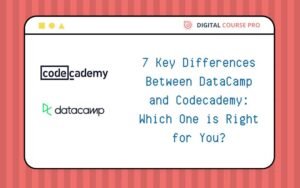How to price your online course for maximum profit is a critical question for course creators aiming to balance value for learners with sustainable revenue. Setting the right price can significantly impact your sales, profitability, and the perceived value of your course. In this detailed guide, we’ll explore the key factors to consider when pricing your online course to maximize profit while delivering great value to your students.

1. Understand Your Target Audience
Before you can determine the optimal price for your course, it’s essential to understand your target audience. Consider the following aspects:
- Demographics: Who are your learners? Consider their age, occupation, and income level.
- Pain Points: What problems are they looking to solve with your course?
- Willingness to Pay: How much are they willing to invest in solving these problems? You can gauge this by surveying your audience or analyzing similar courses in your niche.
Understanding these factors will help you set a price that aligns with your audience’s expectations and perceived value.
2. Analyze Competitor Pricing
Researching how similar courses are priced in your niche can provide valuable benchmarks. Look at the following:
- Price Range: Identify the price range for courses similar to yours.
- Value Proposition: Analyze what additional value competitors are offering (e.g., additional resources, live sessions, certification).
- Market Positioning: Determine how you want to position your course in the market – as a premium offering, a mid-range option, or a budget-friendly choice.
This analysis will help you understand where your course fits in the market and set a competitive price.
3. Determine Your Course Value
The perceived value of your course plays a significant role in pricing. To enhance perceived value, consider:
- Content Quality: Ensure your content is high-quality, up-to-date, and comprehensive.
- Instructor Credibility: Highlight your expertise and experience in the subject matter.
- Support and Engagement: Offer additional support, such as live Q&A sessions, community access, and personalized feedback.
- Bonuses and Extras: Include bonus materials like eBooks, templates, or exclusive webinars to add value.
Communicate these value points clearly in your marketing to justify your price.
4. Choose a Pricing Model
Selecting the right pricing model is crucial. Here are some common models to consider:
- One-Time Payment: A single payment for lifetime access to the course. This model is straightforward and preferred for comprehensive courses.
- Subscription Model: Recurring payments (monthly or annually) for continued access. Ideal for courses with ongoing content updates or added community support.
- Tiered Pricing: Offer different levels of access (e.g., basic, advanced, premium) with varying features and support. This allows you to cater to different budget levels and needs.
- Pay-What-You-Want: Let learners choose their price. This can attract a broader audience, though it may result in lower average revenue.
Choose the model that best fits your course structure and audience preferences.
5. Test and Adjust Your Pricing
Pricing isn’t a one-time decision; it’s an ongoing process. Consider the following strategies:
- A/B Testing: Test different price points to see which generates the best balance of enrollments and revenue.
- Discounts and Promotions: Offer limited-time discounts or early-bird pricing to gauge demand and test price sensitivity.
- Gather Feedback: Ask your learners for feedback on pricing and perceived value. Use this feedback to make informed adjustments.
By continuously testing and refining your pricing strategy, you can find the optimal price point for maximum profit.
6. Communicate the Value Clearly
Effective communication is key to justifying your price. Highlight the benefits and value your course offers:
- Outcome Focused: Clearly state what learners will achieve by taking your course.
- Success Stories: Share testimonials and success stories from past students.
- Detailed Breakdown: Provide a detailed breakdown of what’s included in the course and the value of each component.
- Money-Back Guarantee: Offering a money-back guarantee can reduce perceived risk and encourage more enrollments.
Use your sales page, emails, and promotional materials to communicate this value effectively.
7. Consider the Lifetime Value of a Customer
Beyond the initial course sale, consider the lifetime value of a customer. This includes potential future purchases, such as advanced courses, coaching services, or membership subscriptions. Building a strong relationship with your learners can lead to repeat business and higher overall revenue.
Conclusion
How to price your online course for maximum profit involves understanding your audience, analyzing competitors, determining your course value, choosing the right pricing model, testing and adjusting prices, clearly communicating value, and considering the lifetime value of a customer. By carefully considering these factors, you can set a price that maximizes both your profit and the value delivered to your learners.
If you’re ready to unlock the potential of your online course business and achieve financial independence, be sure to read our comprehensive guide on How to Make $10,000 a Month with an Online Course Business. This blog post is rich with practical strategies, expert guidance, and actionable tips to help you turn your passion into a profitable enterprise. Whether you’re just getting started or looking to grow your existing courses, our guide provides the tools and insights you need to hit your income goals. Visit our blog now and start your journey towards financial success!





